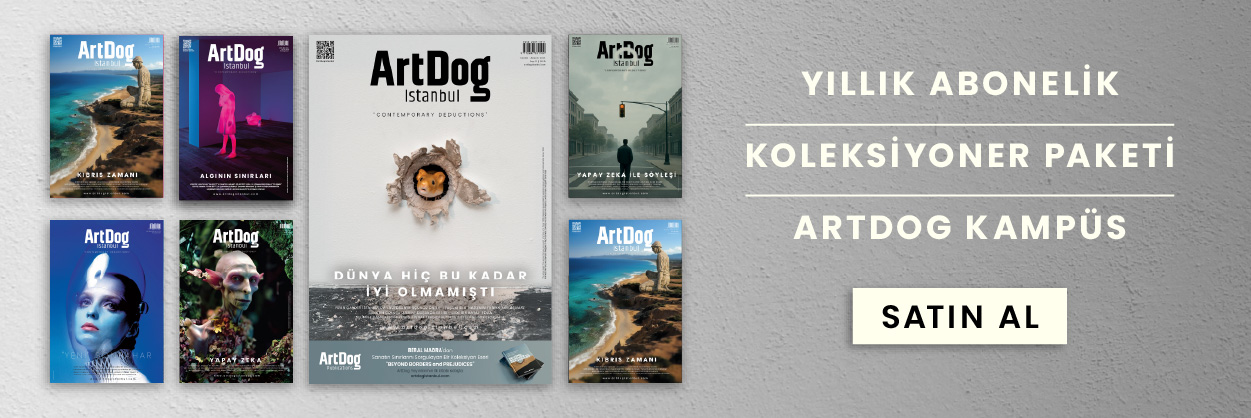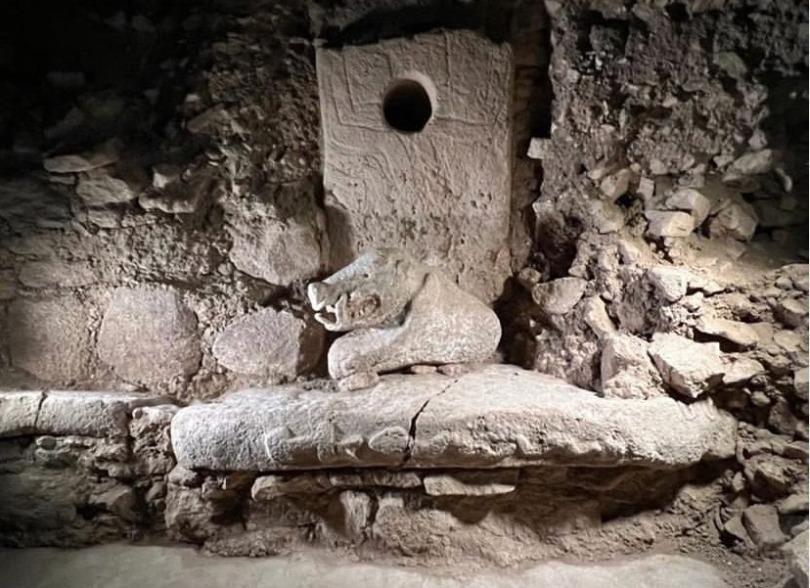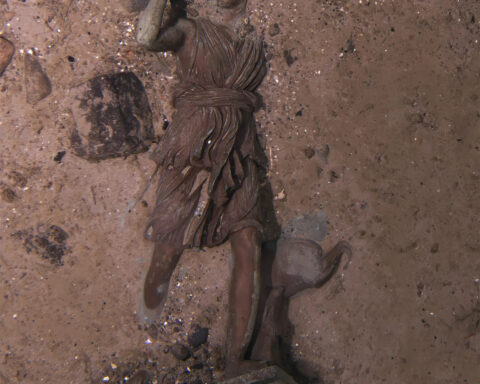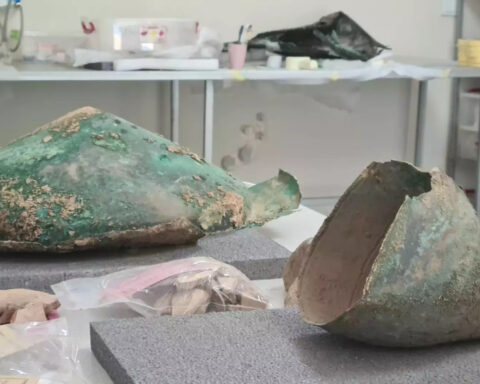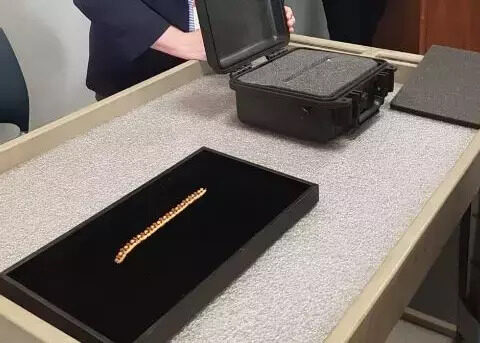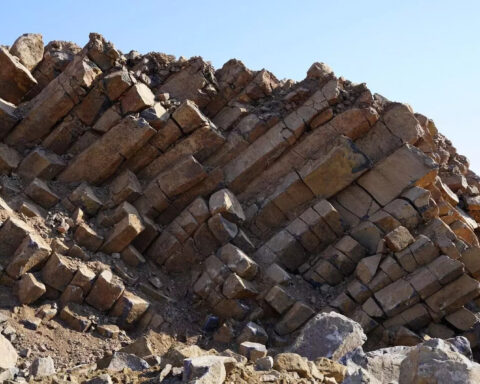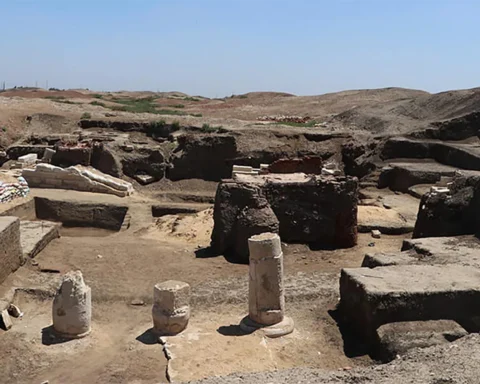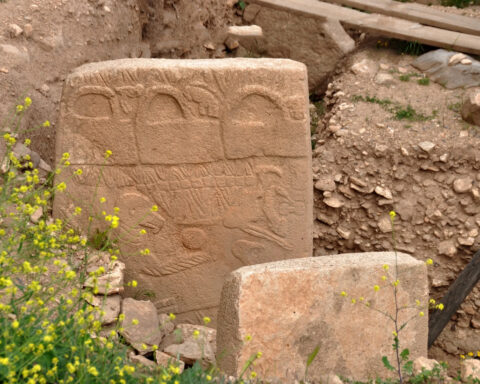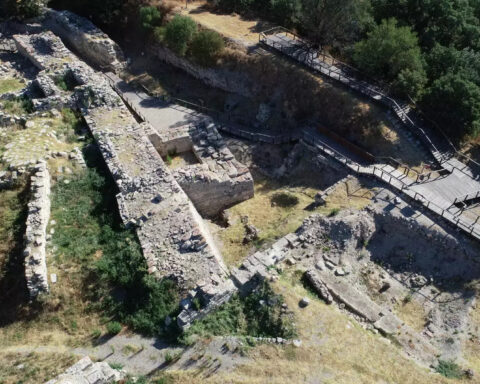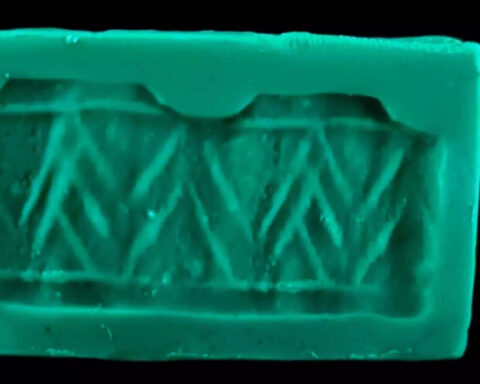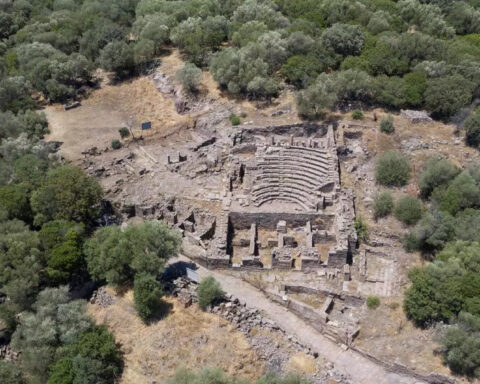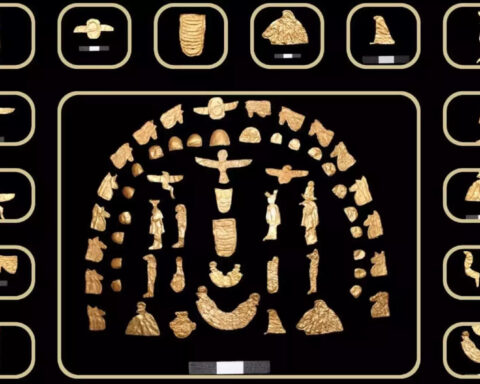Archaeologists have recently made some groundbreaking discoveries in the Stone Hills (Taş Tepeler) that will leave an indelible mark on human history. Firstly, they unearthed the first-ever painted Neolithic statue from Göbeklitepe. Secondly, they discovered a 2.3-meter human statue located in Karahantepe.
During its first Titanic expedition in more than ten years, a Georgia-based company with salvage rights to the historic shipwreck discovered a long-lost statue while documenting the ship’s natural deterioration this summer. The statue, a two-foot-tall (61 cm) ornate bronze replica of
Recent excavations at Ayanis Castle in Türkiye’s Eastern Anatolian region of Van have uncovered new archaeological finds, such as three bronze shields and a helmet that are approximately 2,700 years old. The artifacts were discovered during this year’s phase of a 36-year
Archaeologists have unearthed 86,000-year-old traces of human life and tools during the first excavation at İnkaya Cave in the western province of Çanakkale, Türkiye. The excavation, led by İsmail Özer and the Troy Museum Directorate, is part of a project that began
A 2,700-year-old necklace, recovered from the Bintepeler archaeological site in Manisa and smuggled from Türkiye to the United States, has been returned. This ancient artifact, considered a significant example of Lydian art, was illegally taken decades ago and had been held in
During road construction in the Siverek district of Şanlıurfa province, hundreds of basalt columns estimated to be between 2 and 5 million years old were discovered and have since been designated as a protected site. The discovery occurred at the 31st kilometer
In a remarkable archaeological find, the remnants of an ancient Egyptian observatory, dating back to the 6th century B.C.E., have been unearthed in Kafr El-Shaikh, shedding new light on the sophisticated astronomical knowledge of ancient Egypt. Nestled within the Buto temple at
According to recent research by scientists from the University of Edinburgh, the ancient pillars of Göbeklitepe, a Pre-Pottery Neolithic site in Turkey, may contain evidence of the world’s oldest lunisolar calendar. This discovery also implies that a devastating comet impact could have
The restoration of a nearly 2,800-year-old water cistern from the Urartu period, discovered within Harput Castle in Türkiye’s eastern Anatolia region, has been successfully completed. Located in Elazığ province, Harput Castle has been the focus of archaeological excavation and restoration projects since
Excavations are currently underway to uncover structures in the 5,500-year-old ancient city of Troy, located within the borders of Tevfikiye village in the northwestern province of Çanakkale. Official excavations in Troy, a UNESCO World Cultural Heritage site, began in 1871, and numerous
Archaeological excavations at the Tavşanlı Mound in the Tavşanlı district of Kütahya province have uncovered a 3,700-year-old cylinder seal from a layer dating to the end of the Assyrian Trade Colonies period. This rare seal, which has excited the archaeological community, is
An agora (city square) has been discovered during excavations in the 2,700-year-old ancient city of Aigai, located in the western province of Manisa. Ongoing work to unearth the agora, situated next to the parliament building, has also revealed bull-head reliefs and inscriptions
A trove of ancient artifacts from Egypt’s last dynasty has been discovered in 63 tombs in the Nile Delta. Experts are now working to restore and classify the finds, according to an official from the country’s antiquities authority on Aug. 12. The

